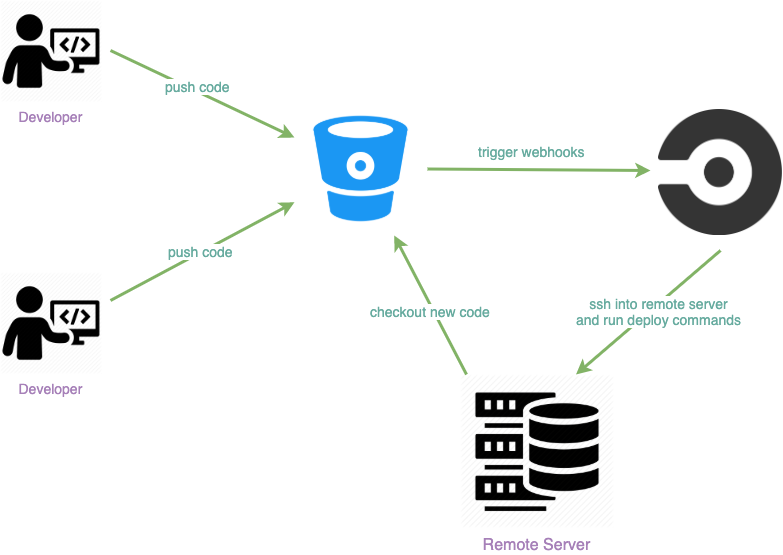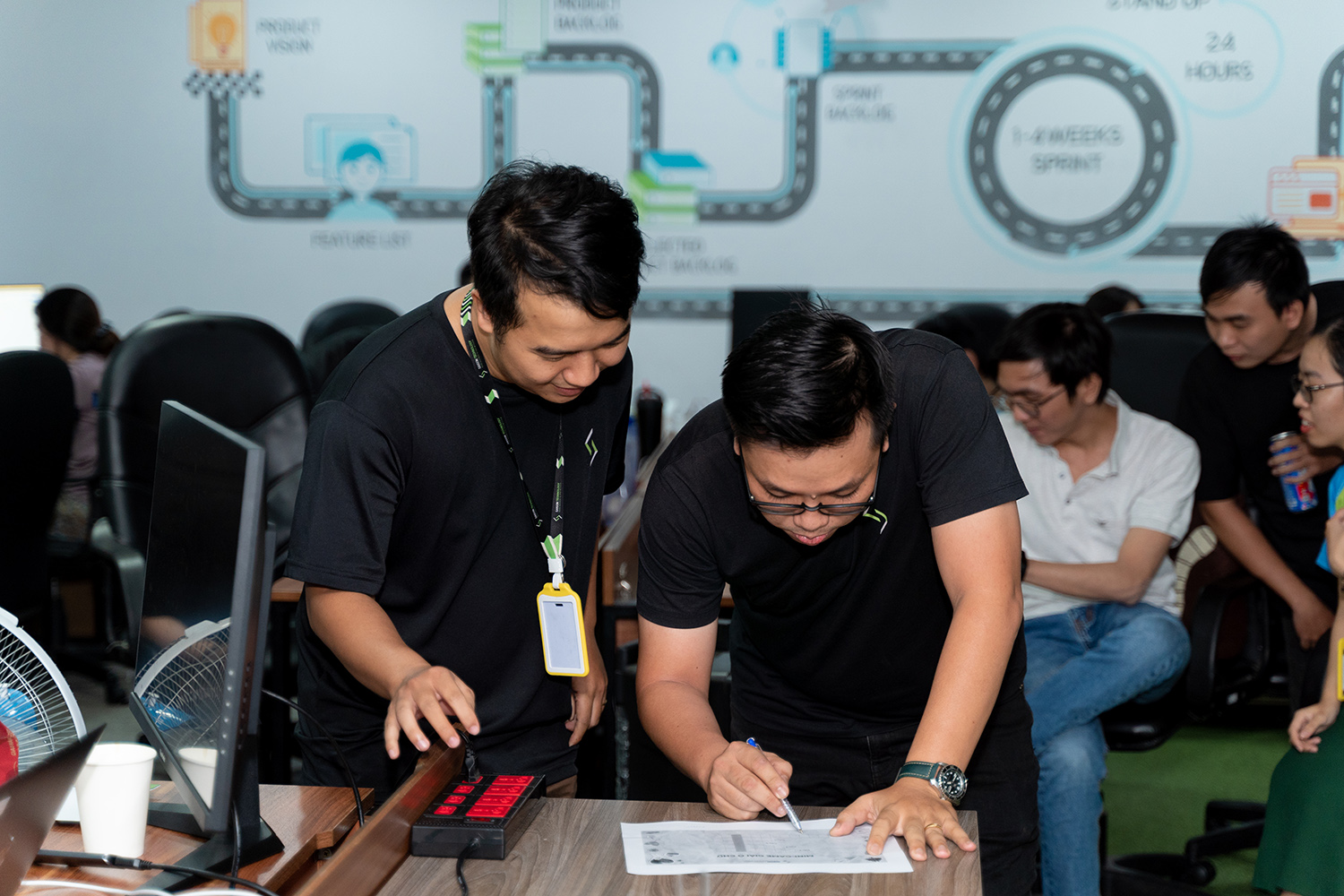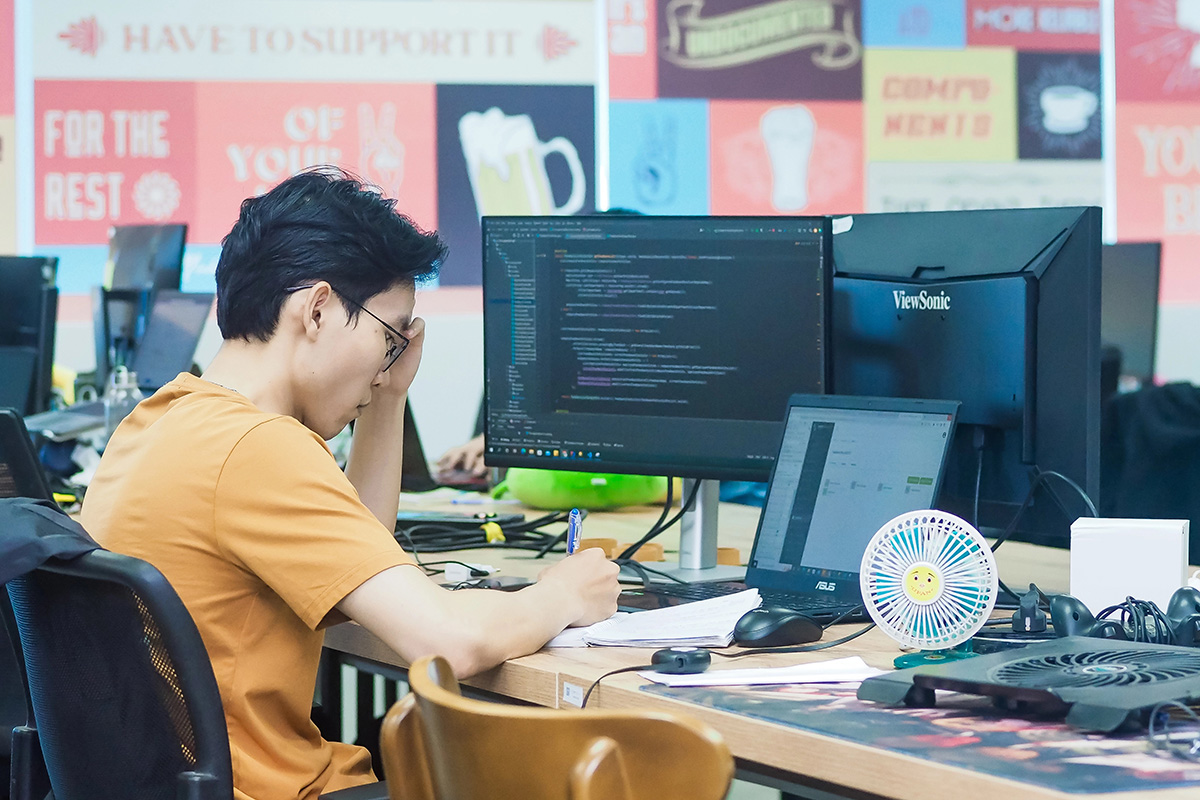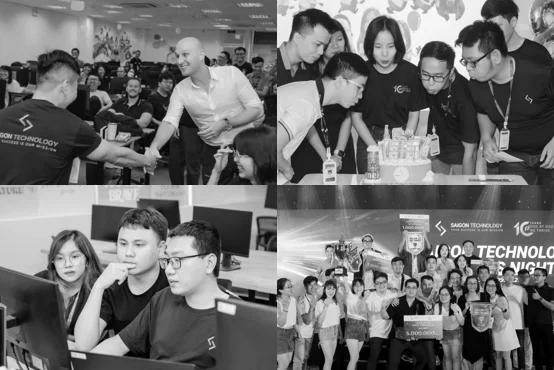Introduce to Blockchain Technology
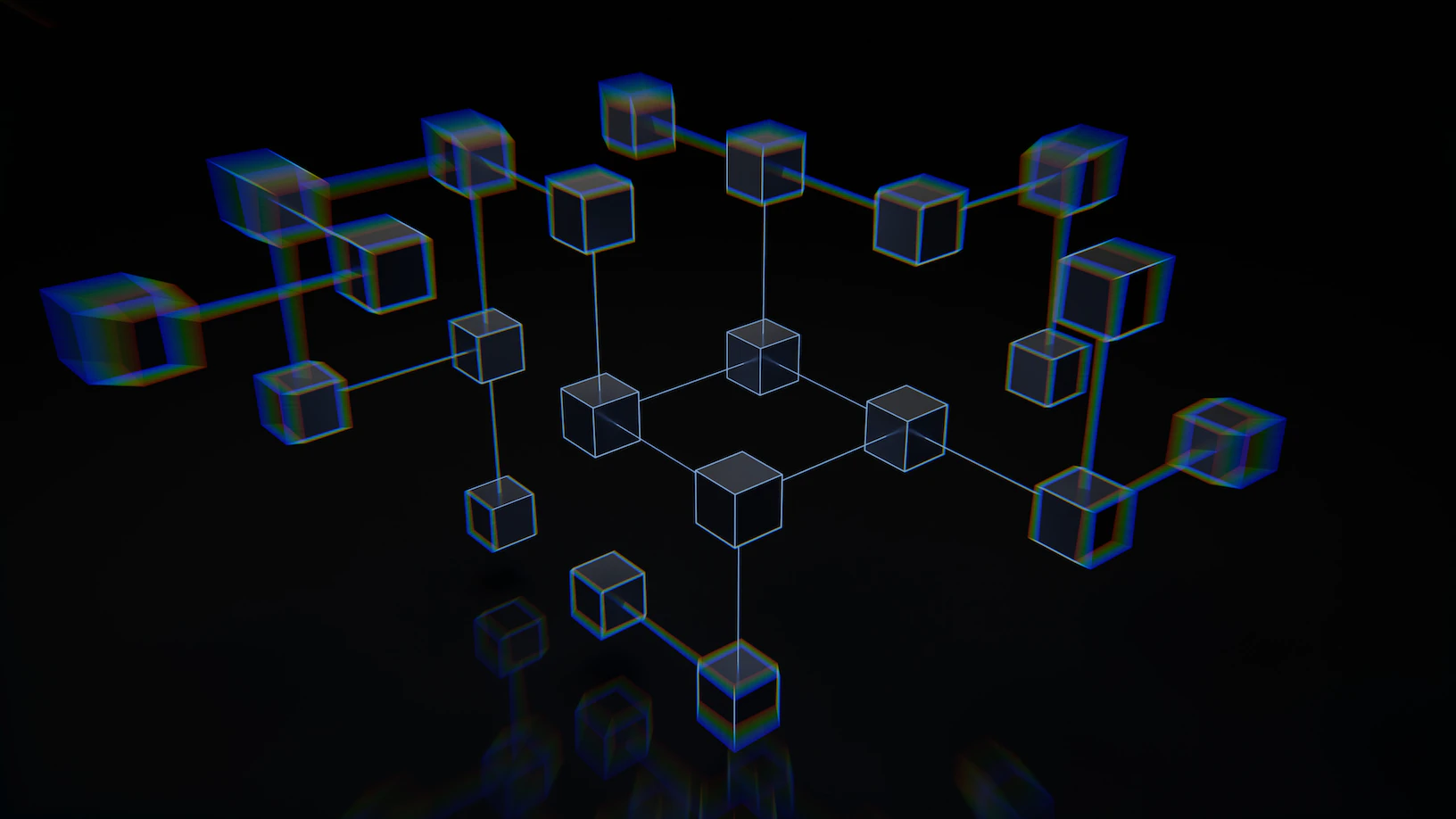

I. Preface
This article aims to provide a comprehensive introduction to blockchain technology. By providing in-depth knowledge and insights, it is intended to assist readers in making informed decisions about the use of blockchain technology. It is important to note that while cryptocurrency is one application of blockchain technology, this article will not focus on cryptocurrency-related terms or examples, as they may add unnecessary complexity and confusion. However, a dedicated post on this topic will be included in this series.
II. Blockchain structure
To put it simply, blockchain refers to a series of data blocks that are linked together.

To enhance the security and integrity of the blockchain, each block is encrypted using a hash function and linked to the previous block through the resulting hashed token.
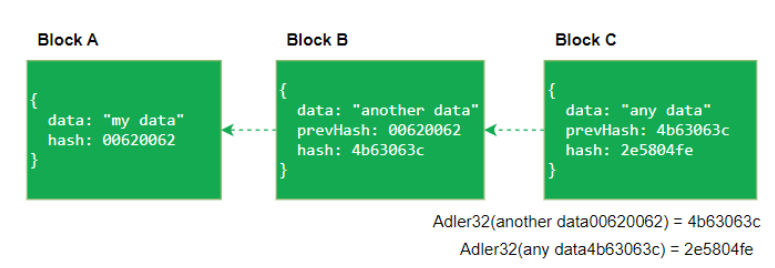
The data is then stored in the form of signed blocks that are interconnected, forming a chain of immutable data entries. Due to this characteristic, users are only able to read and add new information to the chain.
In the event that an attempt is made to alter the information contained within a block, the hash signature will change and the chain will be broken. To restore the validity of the chain, the subsequent block must update its previous hash signatures and so on, resulting in a completely different blockchain.
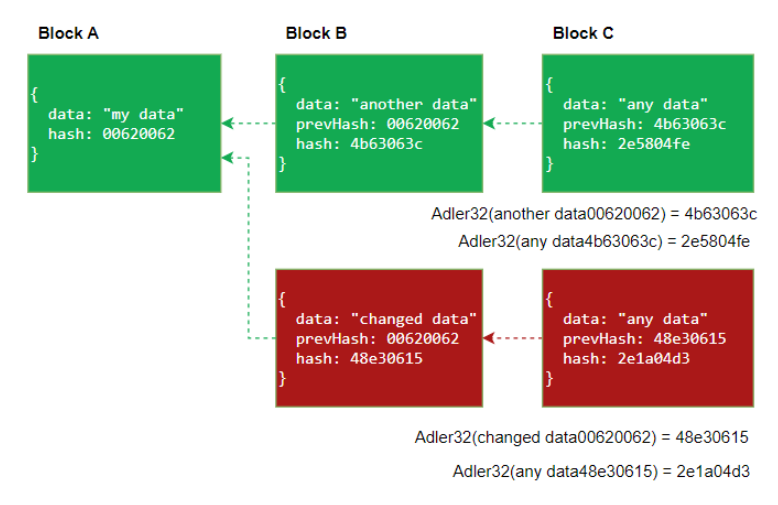
III. Decentralization
Consider a scenario where important historical events are being recorded and it is imperative that the facts remain unchanged. In such a case, relying solely on a central data center may not provide sufficient integrity. A solution to this issue is to create multiple copies of the blockchain and store them on different nodes owned by various stakeholders, with each node maintaining its own version of the data. This approach is known as decentralization.
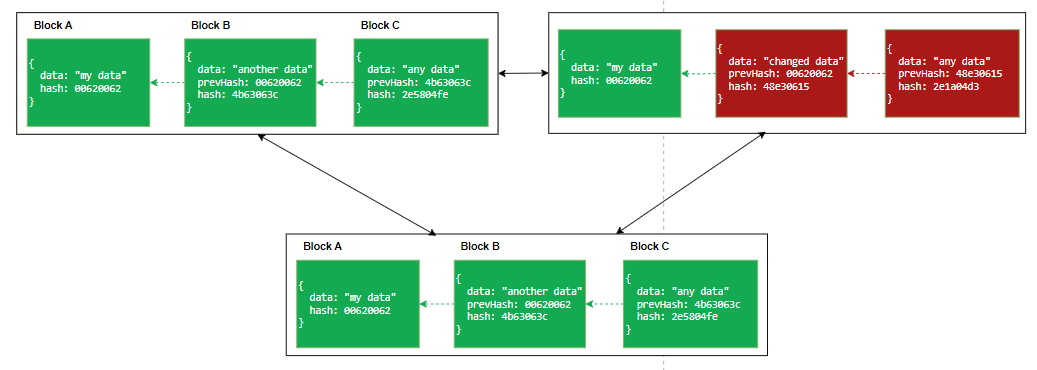
The primary goal of decentralized networks is to minimize the need for trust among participants and to prevent any potential abuse of power or control that could compromise the network’s functionality and integrity.
The concept of decentralization has a longstanding presence in the realm of technology. In the process of developing a technological solution, one typically encounters three fundamental network architectures to consider: centralized, distributed, and decentralized.
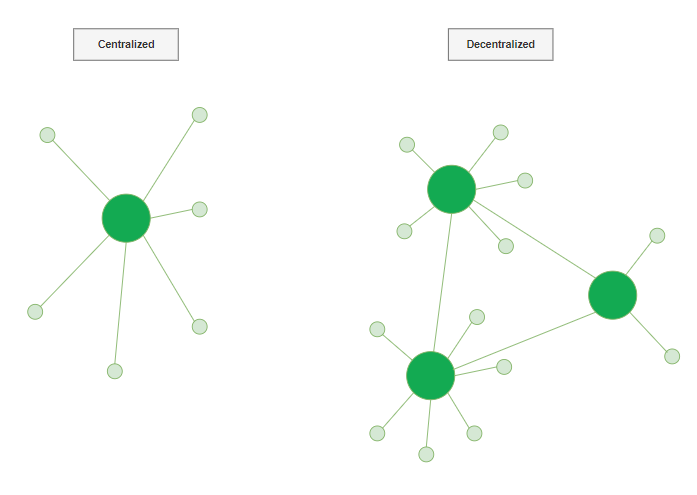
Benefits of decentralization
Provides a trustless environment
In a decentralized blockchain network, participants are not required to have prior knowledge or trust of one another. Instead, each member possesses an identical copy of the data in the form of a distributed ledger. Should any member's ledger become compromised or corrupted, it will be deemed invalid by the majority of the network's members.
Improves data reconciliation
It is common for companies to share data with their partners, but this information is typically altered and saved separately by each party, only being revisited when necessary for further distribution. This process of transforming the data presents numerous possibilities for mistakes or loss of information. However, with a decentralized data storage system, all parties have immediate access to a unified perspective of the data.
Reduces points of weakness
Systems that overly depend on specific actors can be vulnerable, and decentralization can mitigate these vulnerabilities. Such vulnerabilities can result in systemic failures like unfulfilled service promises, inefficient service delivery due to resource depletion, occasional outages, bottlenecks, inadequate incentives for quality service provision, or corruption.
Optimizes resource distribution
Improving the distribution of resources through decentralization can enhance performance and consistency of services, while also reducing the risk of catastrophic failure.
IV. Compare Blockchain with database
A blockchain's main objective is to function as a database for storing information. The way blockchains store data sets them apart from other types of databases. Although blockchains can be classified as databases, the reverse is not true. Traditional databases do not utilize signed blocks to keep track of information.
|
Blockchain |
Databases |
|
|
Data Integrity |
It is nearly impossible for someone to alter the data without disrupting the chain due to the structure of the blockchain. |
If appropriate measures are not implemented, data manipulation can be carried out by a malicious actor. |
|
Transactions |
Blockchain can only be read or have new data added to it. |
Allow full manipulation of data: it can be created, read, updated, or deleted (CRUD operations). |
|
Querying Performance |
The methods used for verifying data integrity can have a negative impact on the overall performance and speed of a blockchain's querying capabilities. |
Databases offer speedy access to the data. |
|
Structure |
Fully decentralized blockchains can operate without the need for any central authority. |
Database management involves centralized control, with an administrator holding ownership and authority over the data. |
Although databases and blockchains are commonly viewed as separate entities, it is feasible to develop a hybrid system known as a blockchain database. Such systems aim to leverage the advantages of both technologies to create a secure and immutable chain of easily queryable blocks, resulting in superior performance.
V. Blockchain use cases
The potential uses of blockchain technology extend well beyond the realm of cryptocurrency and bitcoin. By enhancing transparency and equity, while simultaneously streamlining business operations and reducing costs, this technology is revolutionizing numerous industries. Its impact ranges from the enforcement of contracts to improving government efficiency.
- Supply chain management
Blockchain technology improves the efficiency of supply chains by enabling precise tracking of item locations and eliminating the need for paper-based trails. This enhances product quality monitoring and minimizes losses during production.
- Healthcare
The healthcare ecosystem revolves around the patient as the central point, and as such, the patient has a right to accurate information which can be a matter of life or death. The privacy and security of health data are crucial, especially in tracking prescription drugs' serials and batch numbers. Hospitals have replaced paper-based record-keeping with blockchain technology to store confidential patient data. Patients are given a unique key to access their records, giving them control over who views their data. Additionally, patient diagnoses can be stored to monitor their health history.
- Food safety
An intriguing application of blockchain technology in the field of food safety is its capacity to facilitate the tracing of food products from their point of origin to the consumer’s plate. By utilizing the immutable characteristics of blockchain records, the transportation of food items from their source to the retail outlet can be monitored. In instances of food-borne illness outbreaks, this enables the rapid and precise identification of the contamination source.
- Real estate
Blockchain technology enables the storage of ownership and title information on its network, simplifying the process of transferring and tracking ownership. By removing paper records from the equation, it provides a transparent and unambiguous record of legal ownership. Titles are maintained on the blockchain network and can be accessed, modified, and updated as needed.
- Copyright and royalty protection
In today’s digital age, it is essential to have robust copyright and ownership laws for music, videos, blogs, and other online content. Blockchain technology can enhance the security of these laws. Utilizing digital content downloads can ensure that artists and content creators receive their fair share of revenue. Additionally, blockchain can provide real-time and accurate data on royalty distribution to musicians and other content creators.
Real world application:
- Open Music Initiative (https://open-music.org): an open protocol for uniform identification of music creators and rights holders across the industry.
This post provides numerous real-world examples to further illustrate the concepts discussed: Blockchain applications.
VI. Conclusion
In simple terms, blockchain is a type of database governed by specific rules. Based on these rules, users can be introduced to more trustworthy applications. It is our hope that this blog post will provide you with a fundamental understanding of blockchain technology.
Resources
- No
References





